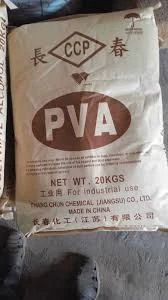Hydroxy Methyl Ethyl Cellulose An Overview of its Properties and Applications
Hydroxy Methyl Ethyl Cellulose (HMEC) is a cellulose derivative that possesses unique properties, making it a versatile material used across various industries. As a non-ionic water-soluble polymer, HMEC exhibits excellent film-forming, thickening, and stabilizing characteristics, which have encouraged its application in a wide range of products, from construction materials to pharmaceuticals.
Chemical Structure and Properties
HMEC is derived from cellulose, a natural polymer found in the cell walls of plants. The modification process involves the introduction of hydroxy methyl and ethyl groups, which enhance its solubility and performance in aqueous solutions. The resulting polymer features a high degree of substitution, contributing to its thickening properties. HMEC is characterized by its unique rheological behavior; it exhibits pseudoplasticity, meaning that its viscosity decreases under shear stress, which allows for easier handling and application.
One of the defining properties of HMEC is its ability to form transparent films. This feature is particularly valuable in applications where clarity and smooth texture are essential, such as coatings and adhesives. Additionally, HMEC is stable across a wide range of pH levels, making it suitable for diverse formulations, from acidic to alkaline environments.
Applications in Various Industries
1. Construction HMEC is widely used as an additive in cement and mortar formulations, improving workability and adhesion. Its thickening properties allow for better control of the viscosity in construction materials, aiding in the application process. The polymer enhances bonding strength and reduces water permeability, thereby increasing the longevity of structures.
hydroxi methyl ethyl cellulos

2. Pharmaceuticals In the pharmaceutical sector, HMEC serves as a binder and a film-forming agent in tablet formulations. It is employed in controlled-release drug delivery systems, as it can modulate the release rate of active ingredients. Its biocompatibility and non-toxic nature make HMEC an ideal choice for various medicinal applications, including topical formulations and eye drops.
3. Personal Care Products HMEC is commonly found in personal care items such as shampoos, conditioners, and lotions. Its thickening ability helps achieve the desired texture and consistency in these products, enhancing their aesthetic appeal. Furthermore, HMEC acts as a stabilizer in emulsions, preventing separation and improving the product's overall integrity.
4. Food Industry In food applications, HMEC is utilized as a thickener and stabilizer in sauces, dressings, and dairy products. It contributes to texture modification, enhancing mouthfeel while maintaining product stability. Its usage in the food sector is regulated and considered safe for human consumption, allowing for its integration into various culinary products.
Environmental Considerations
As a cellulose derivative, HMEC is derived from renewable resources, which aligns with the growing demand for sustainable materials in various industries. The biodegradable nature of HMEC reduces its environmental impact compared to synthetic polymers, making it a preferable choice in formulations aimed at sustainability.
Conclusion
Hydroxy Methyl Ethyl Cellulose is a remarkable polymer with extensive applications across multiple industries. Its unique properties, including water solubility, film-forming capability, and thickening characteristics, make it a valuable ingredient in construction, pharmaceuticals, personal care, and food products. As industries continue to seek sustainable and effective materials, HMEC stands out as a versatile solution that meets both performance and environmental criteria. Its adaptability and proven efficiency ensure that HMEC will remain an integral component of innovation in material science.
-
Premium Detergent Grade HPMC Hydroxypropyl Methylcellulose: Superior Thickening & StabilityNewsAug.31,2025
-
HEC 100000 Hydroxyethylcellulose for Paint | Superior ThickeningNewsAug.30,2025
-
Wall Putty Rdp Powder Packaging DesignNewsAug.29,2025
-
Introduction to Hpmc Hydroxypropyl Methyl CellulosNewsAug.29,2025
-
Hpmc Industri Grade IntegrationNewsAug.29,2025
-
How to Choose the Right Construction AdhesiveNewsAug.29,2025




